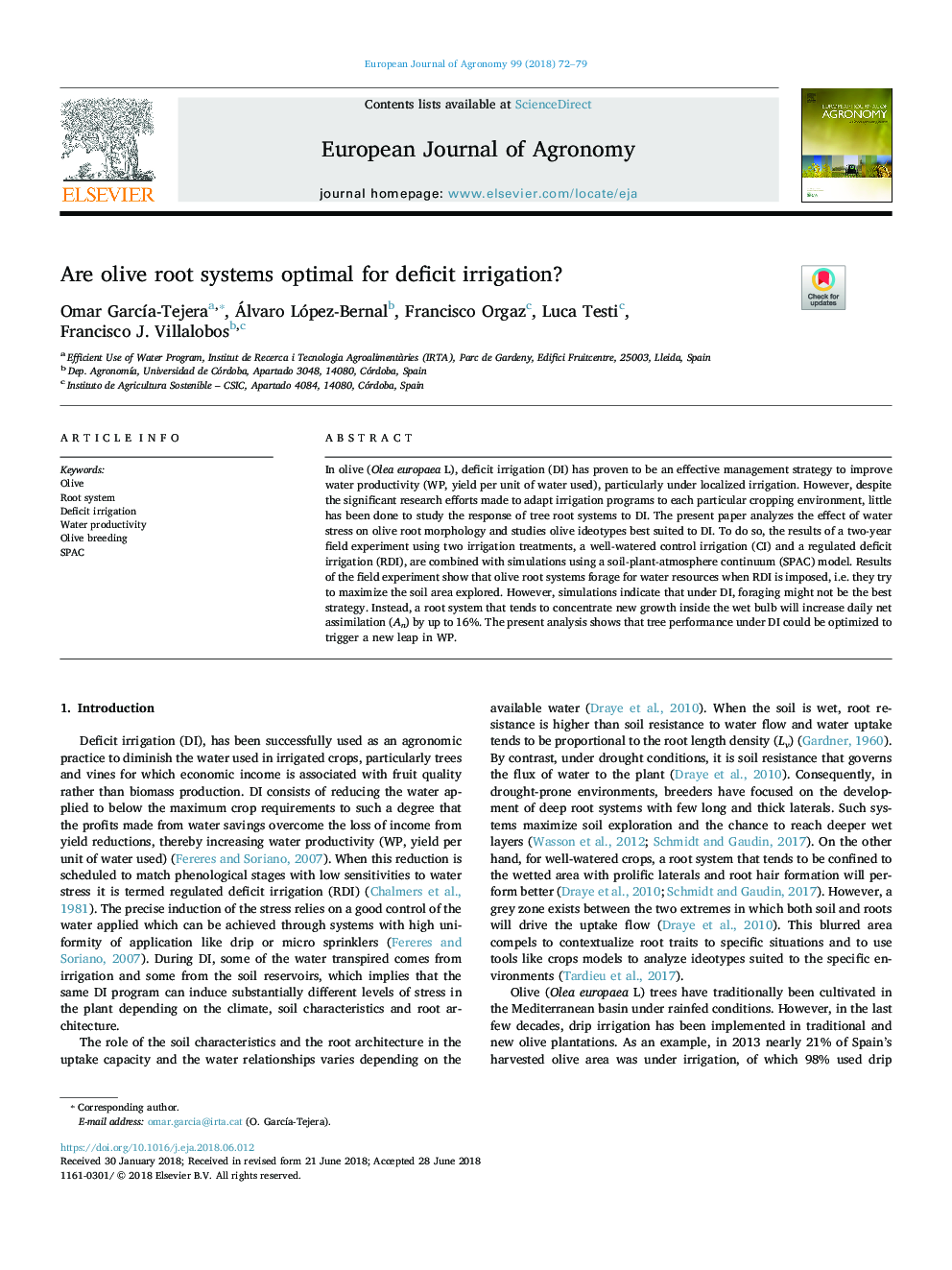| Article ID | Journal | Published Year | Pages | File Type |
|---|---|---|---|---|
| 8878834 | European Journal of Agronomy | 2018 | 8 Pages |
Abstract
In olive (Olea europaea L), deficit irrigation (DI) has proven to be an effective management strategy to improve water productivity (WP, yield per unit of water used), particularly under localized irrigation. However, despite the significant research efforts made to adapt irrigation programs to each particular cropping environment, little has been done to study the response of tree root systems to DI. The present paper analyzes the effect of water stress on olive root morphology and studies olive ideotypes best suited to DI. To do so, the results of a two-year field experiment using two irrigation treatments, a well-watered control irrigation (CI) and a regulated deficit irrigation (RDI), are combined with simulations using a soil-plant-atmosphere continuum (SPAC) model. Results of the field experiment show that olive root systems forage for water resources when RDI is imposed, i.e. they try to maximize the soil area explored. However, simulations indicate that under DI, foraging might not be the best strategy. Instead, a root system that tends to concentrate new growth inside the wet bulb will increase daily net assimilation (An) by up to 16%. The present analysis shows that tree performance under DI could be optimized to trigger a new leap in WP.
Related Topics
Life Sciences
Agricultural and Biological Sciences
Agronomy and Crop Science
Authors
Omar GarcÃa-Tejera, Álvaro López-Bernal, Francisco Orgaz, Luca Testi, Francisco J. Villalobos,
